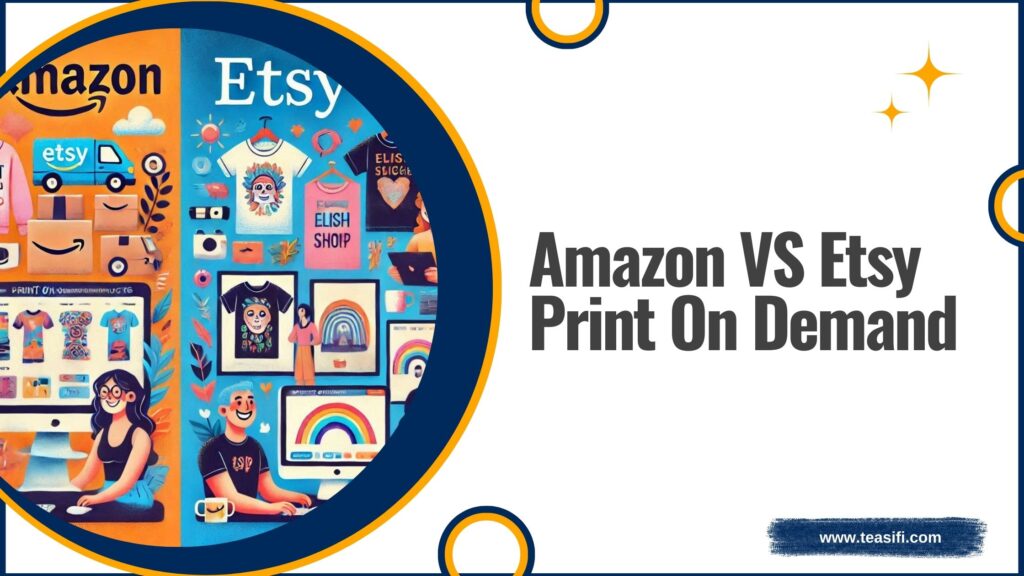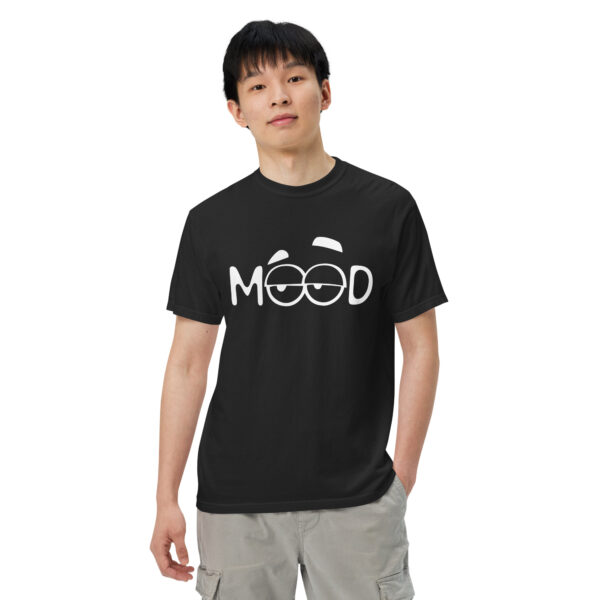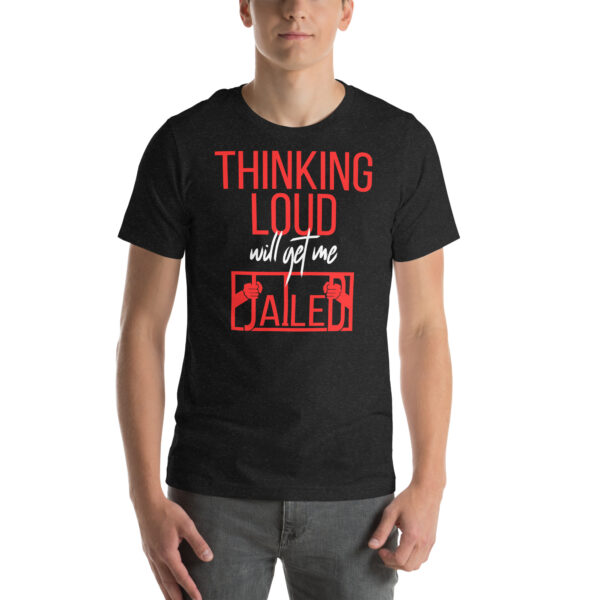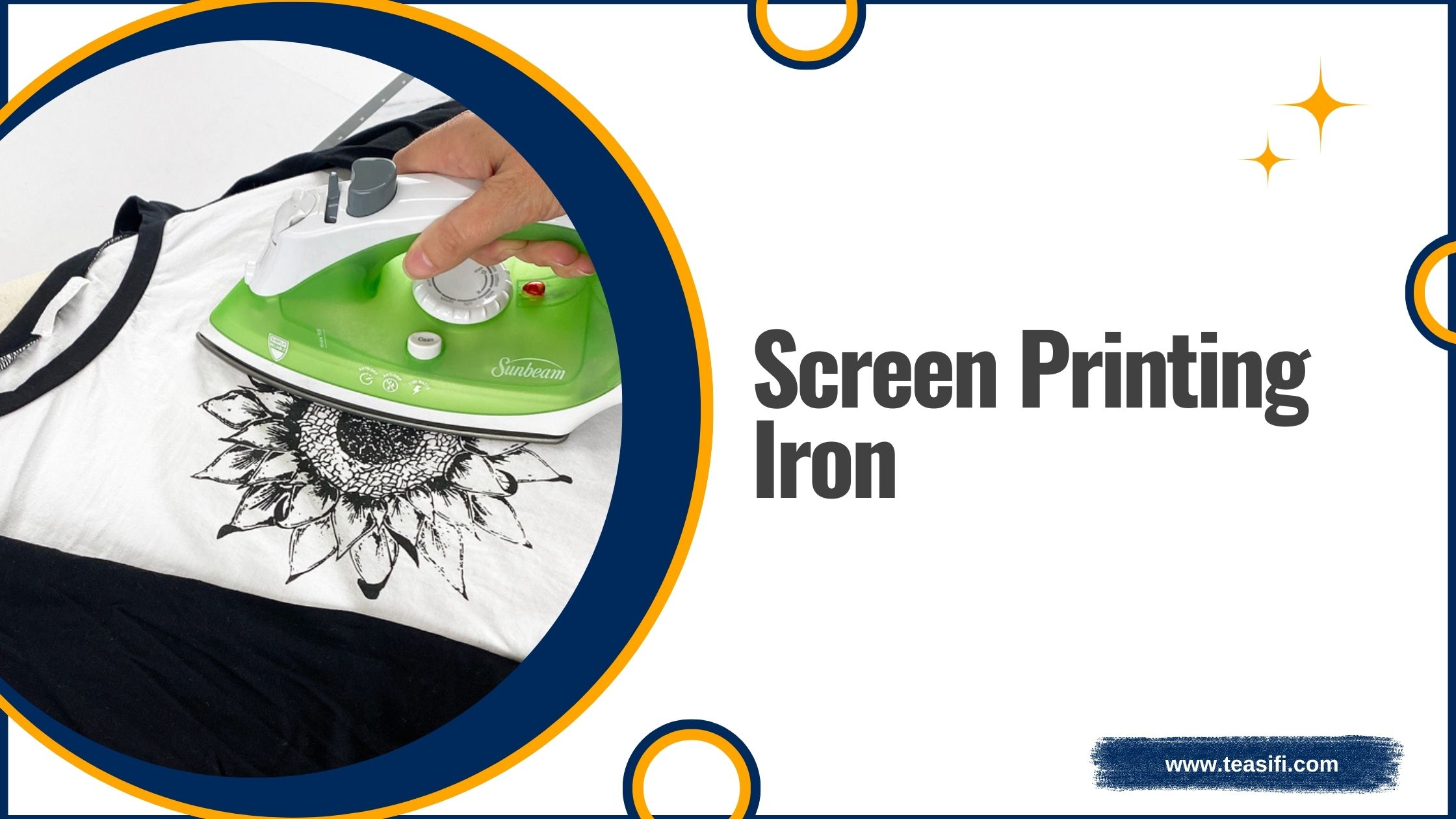Navigating the dynamic realm of print-on-demand involves careful consideration of platforms like Amazon and Etsy, each offering distinct opportunities for sellers.
While Amazon represents a vast, efficiency-driven marketplace, catering to broad customer bases with diverse shopping intentions, Etsy embodies a more niche, community-focused environment designed for unique, custom products.
Sellers must strategically align their business goals, brand identity, and target audience with the nuances of these platforms.
For instance, Etsy’s appeal lies in its connection with shoppers who value craftsmanship and personal touches, whereas Amazon attracts those seeking variety and speed.
By analyzing factors such as fee structure and platform reach, sellers can determine which path best complements their ecommerce business aspirations.
Through this lens, the print-on-demand journey becomes more tailored, enhancing not only the platform’s potential but also the seller’s ability to thrive.
Table of Contents
ToggleAmazon: What Is It, And Who Is It Best For?

Amazon remains one of the most popular online marketplaces, offering a vast platform with remarkable scalability.
This accessibility enables sellers to reach a global audience, expanding their customer base quickly and efficiently.
The sheer size of Amazon means that businesses can tap into high-volume sales, benefiting from its robust fulfillment services and the potential for rapid business growth.
It is particularly advantageous for those selling products with broad appeal, where reach and volume are prioritized.
While independent sellers can find success here, competition is fierce, and establishing a strong brand and marketing strategy is key.
Amazon’s platform is tailored for businesses aiming for mass-market exposure and those focused on creating a seamless customer experience with an emphasis on fast, efficient shipping and customer loyalty.
The digital storefront that Amazon offers is perfect for those looking to grow quickly and achieve significant profit margins through a well-structured business model.
Etsy: What Is It, And Who Is It Best For?
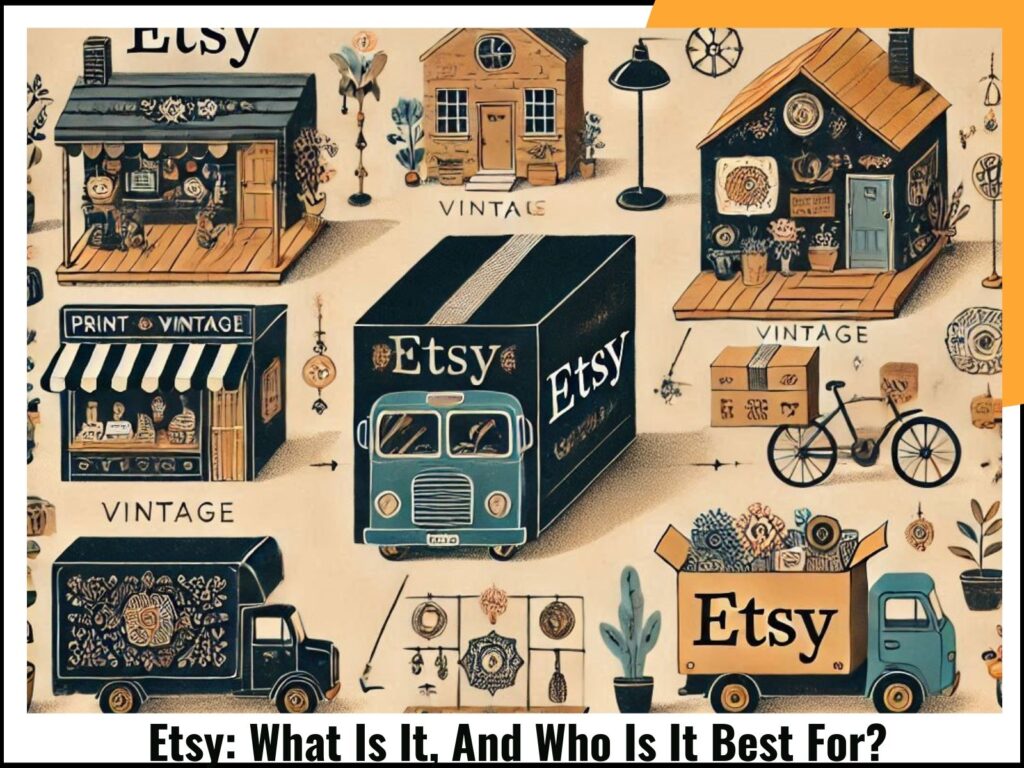
Etsy presents a completely different approach, focusing on handmade, vintage, and artisanal products.
It’s an ideal marketplace for small businesses, independent artists, and entrepreneurs who emphasize creativity and craftsmanship.
Etsy shoppers are drawn to original designs that are unique and not available elsewhere, making the marketplace ideal for print-on-demand drop shipping businesses offering custom products.
Sellers are encouraged to create niche-specific designs that attract loyal customers who value personalization and craftsmanship.
Etsy offers a more intimate and customizable experience, with sellers managing their own digital storefronts and building brands that resonate with their audience.
This marketplace allows for direct customer interaction, fostering a sense of community, which is important for small businesses and those looking to stand out through unique, niche products.
Marketing strategies on Etsy may involve storytelling and brand-building to create lasting customer loyalty, making it an excellent platform for those focused on providing a creative and personalized shopping experience.
Amazon vs Etsy: An In-Depth Comparison
Seller Fees
When evaluating the best marketplace for your online business, understanding the fees on platforms like Etsy and Amazon is key.
On Etsy, sellers are generally attracted by the low transaction and listing fees, along with the flexibility in advertising tools to enhance visibility.
However, these fees can add up, especially if you’re running a small business or looking to scale.
Amazon, on the other hand, presents a more complex fee structure with monthly subscription fees for high-volume sellers and additional fees like FBA for fulfillment services.
This setup may benefit businesses aiming for high volume but could be expensive for small-scale operations.
Choosing between these two depends on business models, product volume, and the level of competition you’re prepared to face.
Audience size
When comparing the audience size of Etsy and Amazon, it’s clear that Amazon enjoys a much larger global customer base, which translates to more potential visitors and sales.
This vast reach can provide higher sales volumes for sellers who can navigate through the competition.
On the other hand, Etsy attracts a smaller but more targeted audience, consisting mainly of buyers looking for unique, handmade items and custom products.
This niche market tends to be loyal, with many customers seeking products with distinctive designs and stories behind them.
While Etsy’s audience may be smaller, it offers unique opportunities for small businesses and those focused on creativity.
Amazon provides greater exposure but requires careful attention to pricing, advertising strategies, and handling the stiff competition.
Most Popular Product Categories
When it comes to selecting the right marketplace for your print-on-demand business, the types of products offered play a crucial role.
Etsy attracts shoppers who are searching for handmade goods, original art, personalized items, and craft supplies, catering to customers seeking unique and custom creations.
On the other hand, Amazon caters to a broader audience with a more diverse range of product categories, such as clothing, home goods, electronics, and appliances.
Both platforms can support best-selling print-on-demand products, but the key lies in evaluating which platform aligns better with your brand and its niche market before diving into the selling process.
Fulfillment Methods
Fulfillment options on Etsy and Amazon differ significantly, and both come with their own set of advantages.
On Etsy, sellers are typically responsible for fulfillment or can opt for third-party print-on-demand fulfillment services such as Printful, which allows for direct interaction with customers and adds a personalized touch to the entire experience.
In contrast, Amazon offers Fulfillment by Amazon (FBA), a service where sellers send their products to Amazon’s fulfillment centers, and Amazon handles packing, shipping, customer service, and returns.
This offers a more hands-off experience, perfect for sellers who prefer an efficient and streamlined process.
The decision to choose between FBA or a more personalized fulfillment service on Etsy depends on your business’s scale and whether you prefer a hands-on or automated approach.
Store Customization And Branding Options
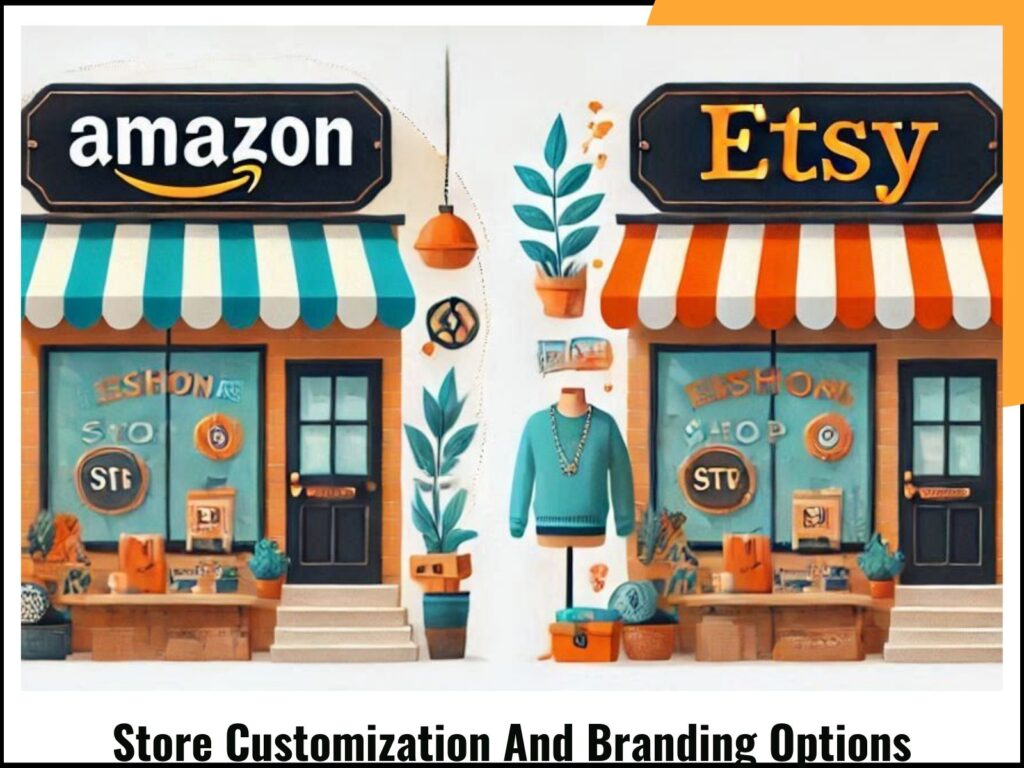
When comparing the store customization and branding options available on both platforms, it’s clear that Etsy offers more flexibility for sellers to showcase their individual brand identity.
Etsy allows you to design your store layout, banner, and even craft a unique biography, offering a strong personal touch that can build deeper connections with customers.
In contrast, Amazon focuses on functionality and efficiency with fewer customization options.
While you can create a basic storefront and list your products, Amazon’s design options are more streamlined, focusing on presenting products rather than building a brand story.
For Etsy, the emphasis is on creative presentation, allowing sellers to feature products in a way that aligns with their brand’s aesthetic and resonates with the audience seeking a more personal and individual connection with the seller.
Etsy product restrictions
When it comes to selling print-on-demand products, Etsy sets itself apart with strict product restrictions.
This marketplace highly emphasizes the originality and handcrafted nature of products, making it ideal for sellers specializing in unique, custom-made items.
Sellers are expected to create original designs, and reselling mass-produced goods is prohibited unless they fall under the vintage category.
As an Etsy seller, it’s crucial to comply with these guidelines, especially if you want to build a reputation for offering truly bespoke and one-of-a-kind products.
With a specific set of product restrictions, Etsy encourages a creative and artisanal approach.
So, if you’re venturing into print-on-demand on Etsy, make sure your designs are original and align with the platform’s ethos.
Amazon product restrictions
In contrast, Amazon offers a broader scope for print-on-demand sellers, with fewer limitations.
The platform allows a wider range of products, including mass-produced items.
However, Amazon also has specific categories that require approval before listing, which means sellers must navigate its regulations carefully.
It’s important to be mindful of Amazon’s compliance policies, ensuring product safety and authenticity are prioritized.
While Amazon accommodates a diverse range of products, its broader scope doesn’t mean you can overlook these essential product restrictions.
From the seller’s perspective, understanding the platform’s regulations around listing and product safety is vital for maintaining a seamless experience.
The complexity of Amazon’s policies can feel overwhelming, but with the right approach, it can be a highly lucrative marketplace for print-on-demand sellers.
Payment Processing And Support
When comparing Amazon vs Etsy for print on demand, payment processing and support systems are integral to a seamless experience for sellers.
Amazon’s payment system is designed to cater to larger businesses with its higher fees that include credit card fees within the overall seller fees.
Although payment handling may seem complex, it offers a robust infrastructure with Seller Central, where sellers can access comprehensive resources like detailed guides and customer service through both phone support and email support.
This structured support focuses on handling high volumes and ensures efficient solutions for payment-related queries, particularly for larger businesses dealing with many transactions and customers.
In contrast, Etsy has a more user-friendly system, which is especially beneficial for smaller sellers.
Its payment processing is based on a combination of a flat fee and a percentage of the sale, making it simpler to manage.
Sellers also appreciate the flexibility of payout schedules, which allows them to control cash flow more effectively.
Etsy Payments simplifies billing with clear and transparent fees, and the platform offers personalized support through direct email support, the Etsy Help Center, and community forums, where peer advice and insights are shared.
This community-driven approach fosters a connection between sellers, enhancing the experience of managing payment methods and addressing issues in a more collaborative environment.
The active community forums offer solutions to buyer-seller interaction concerns and other challenges related to running a print-on-demand business.
While Amazon offers a fixed payout schedule and a more robust system, Etsy’s support, including community-driven resources and flexible payouts, caters better to smaller businesses.
The payment handling systems on both platforms serve different needs—Amazon is perfect for those requiring a broader range of services suited for higher volumes, while Etsy is tailored for smaller businesses that prefer a simpler, more flexible setup with personalized support.
This highlights how both platforms provide comprehensive payment processing and support systems, but their structures suit different types of sellers depending on their business needs and scale.
Final Words
When deciding between Amazon and Etsy for your print-on-demand business, it’s essential to evaluate your unique needs and goals.
If you’re aiming for a larger business with the ability to handle higher volumes, Amazon offers a robust system that integrates payment processing within its seller fees, providing efficiency through its Seller Central support system.
However, it’s important to note that Amazon’s fixed payout schedule and higher fees may not provide the flexibility you need if you’re just starting.
On the other hand, Etsy offers a user-friendlier platform tailored to smaller sellers looking for personalized support.
The choice ultimately comes down to your business size, volume expectations, and support preferences.
Whether you choose Amazon or Etsy, both platforms provide comprehensive resources and support systems designed to meet the needs of their respective sellers.
FAQs
Q1: Which platform is better for high-volume sellers, Amazon or Etsy?
Amazon is better suited for high-volume sellers, offering a more robust system designed to handle larger businesses and higher volumes. It also provides efficient solutions for payment processing and customer support.
Q2: How does the payment processing system differ between Etsy and Amazon?
Etsy uses Etsy Payments, which simplifies payment processing with a combination of a flat fee and a percentage of the sale, making it easier for smaller sellers to manage. Amazon, on the other hand, incorporates payment processing fees within its overall seller fees, which can be higher but offer a broader range of services.
Q3: What are the payout schedule options on Amazon and Etsy?
Etsy provides flexible payout schedules, giving sellers more control over when they receive their funds. In contrast, Amazon has a fixed payout schedule, with sales typically deposited into your bank account within 14 days.
Q4: Which platform offers better customer support?
Etsy offers a more personalized support experience, with community forums, direct email support, and a help center for sellers. Amazon provides structured support through Seller Central, offering detailed guides and customer service via email and phone.
Q5: Can I handle customer disputes more easily on Etsy or Amazon?
Etsy provides a community-driven approach, where sellers can get peer advice in forums, making it easier to resolve issues with buyer-seller interaction. Amazon offers more standardized solutions through its Seller Central support system, focusing on handling disputes efficiently for larger volumes.
Q6: Which platform is more cost-effective for small businesses?
Etsy tends to be more cost-effective for smaller sellers, as its fee structure is more straightforward with lower upfront costs. The flexible payout schedule and lower fees make it a great choice for those just starting out.
Q7: How do Amazon and Etsy support ecommerce businesses differently?
Amazon offers a robust support system designed for larger businesses with a focus on efficiency and handling high volumes of sales. In contrast, Etsy provides personalized support, with a focus on community and resources to help smaller businesses navigate the challenges of ecommerce.

